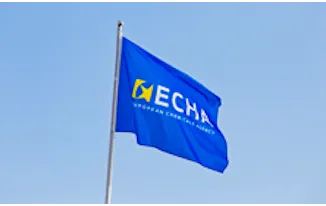REACH: ECHA updates the CoRAP list for the evaluation of chemical substances

Improving control over the supply of minerals from conflict areas
After several months of development, regulation EU 2017/821 on conflict minerals (gold, tin, tantalum and tungsten) was published in the Official Journal of the European Union on 17 May 2017.
This regulation is based on the obligation for importers to gather information on the source of these 4 minerals, mirroring the US law.
The aim of this regulation is to push companies to improve the control of their supply, especially for minerals extracted from mines controlled by armed groups in areas such as the Great Lakes region in Africa. Its purpose is to make companies accountable for the human consequences caused by their business.
A time-consuming compliance process
The regulation will take effect on 8 July 2017 but will not impact companies before 2021. It implements dissuasive consequences for companies with importers that aren’t compliant with this new regulation before the 1st January 2021 deadline.
Note: it only concerns companies importing with a minimum tonnage in conflict minerals.
The distant application date will allow importers to start preparing and gathering information about their supply chains as soon as possible. As the consultation and audit of third parties can be an essential but long term approach in some cases, companies are advised to start taking action today.
You wish to learn more about hazardous substance traceability?
EcoMundo’s experts help you manage the traceability of hazardous substances in your supply chain, by contacting your suppliers to identify the possible presence of SVHCs or other regulated substances in their references.
This traceability expertise applies to different hazardous substances such as:
- Conflict minerals
- SVHCs
- RoHS substances
- Other industry-specific lists of substances
These different approaches rely on the SVHC Factory software that enables to set up and follow in real-time the data collection process throughout your supply chain and to store your traceability information on a unique platform.
Note that downstream communication on the presence of hazardous substances such as SVHCs in articles is a regulatory obligation described in article 33 of the REACH regulation.
Improving control over the supply of minerals from conflict areas
After several months of development, regulation EU 2017/821 on conflict minerals (gold, tin, tantalum and tungsten) was published in the Official Journal of the European Union on 17 May 2017.
This regulation is based on the obligation for importers to gather information on the source of these 4 minerals, mirroring the US law.
The aim of this regulation is to push companies to improve the control of their supply, especially for minerals extracted from mines controlled by armed groups in areas such as the Great Lakes region in Africa. Its purpose is to make companies accountable for the human consequences caused by their business.
A time-consuming compliance process
The regulation will take effect on 8 July 2017 but will not impact companies before 2021. It implements dissuasive consequences for companies with importers that aren’t compliant with this new regulation before the 1st January 2021 deadline.
Note: it only concerns companies importing with a minimum tonnage in conflict minerals.
The distant application date will allow importers to start preparing and gathering information about their supply chains as soon as possible. As the consultation and audit of third parties can be an essential but long term approach in some cases, companies are advised to start taking action today.
You wish to learn more about hazardous substance traceability?
EcoMundo’s experts help you manage the traceability of hazardous substances in your supply chain, by contacting your suppliers to identify the possible presence of SVHCs or other regulated substances in their references.
This traceability expertise applies to different hazardous substances such as:
- Conflict minerals
- SVHCs
- RoHS substances
- Other industry-specific lists of substances
These different approaches rely on the SVHC Factory software that enables to set up and follow in real-time the data collection process throughout your supply chain and to store your traceability information on a unique platform.
Note that downstream communication on the presence of hazardous substances such as SVHCs in articles is a regulatory obligation described in article 33 of the REACH regulation.







